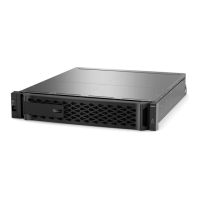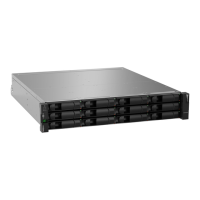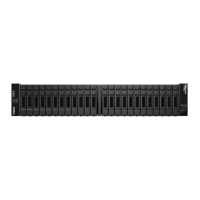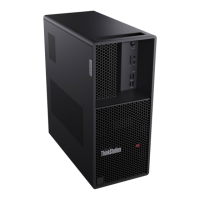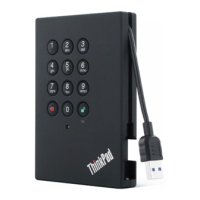Step 1. Display the volumes on the original controllers by using the vvoolluummee sshhooww command. You use the
command output to prepare the list of volumes to move to the new controllers.
Step 2. Display and record license information from the original controllers by using the ssyysstteemm lliicceennssee
sshhooww command.
Step 3. If you use Storage Encryption on the original controllers and the new controllers have encryption-
enabled disks, make sure that the original controllers' disks are correctly keyed:
a. Display information about self-encrypting disks (SEDs) by using the ssttoorraaggee eennccrryyppttiioonn ddiisskk
sshhooww command.
b. If any disks are associated with a non-manufacture secure ID (non-MSID) key, rekey them to
an MSID key by using the ssttoorraaggee eennccrryyppttiioonn ddiisskk mmooddiiffyy command.
Step 4. Send an AutoSupport message from each original controller to inform technical support of the
upgrade: system node autosupport invoke -node node_name -type all -message "Upgrading node_
name from platform_original to platform_new"
Installing the new controllers and joining them to the cluster
You must install the new controllers and join them to the cluster so that you can move volumes from the
original controllers.
When you upgrade controller hardware by moving volumes, both the original controllers and the new
controllers must be in the same cluster.
Step 1. Install the new controllers and join them to the cluster:
If the cluster is running...
Follow instructions in...
ONTAP 9.0 or later
ONTAP 9 Cluster Expansion Express Guide
Creating an aggregate and moving volumes to the new controllers
You create at least an aggregate on each of the new controllers to store the volumes you want to move from
the original controllers. You must identify an aggregate for each volume and move each volume individually.
Before you begin
Data protection mirror relationships must have been initialized before you can move a volume.
Step 1. Create at least one aggregate on each new controller: storage aggregate create -aggregate aggr_
name -node new_node_name -diskcount integer
Step 2. Add the new aggregate to the same SVM as the aggregate on the original controller from which you
want to move the volumes by using the vvsseerrvveerr aadddd--aaggggrreeggaatteess command.
Both the new aggregate and the old aggregate from which the volume will be moved must be in the
same SVM.
Step 3. Verify that the new aggregate is now assigned to the same SVM as the aggregate on the original
controller by using the vvsseerrvveerr sshhooww --vvsseerrvveerr svm_name command.
Step 4. Display information for the volumes that you want to move from the original controllers to the new
controllers: volume show -vserver svm_name -node original_node_name
You should retain the command output for later reference.
Example
Chapter 6. Upgrading controller hardware 101

